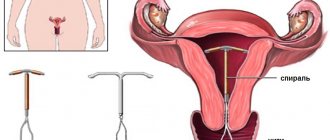Endometriosis is a disease in which tissue from the lining of the uterus is found in places where it normally should not be. Most often, endometrioid heterotopias affect the ovaries, fallopian tubes, bladder, and less often spread beyond the pelvis: to the intestines, kidneys, lungs, navel, brain, nerves, and postoperative scars.
According to statistics, endometriosis occurs in 3–10% of women of childbearing age. But these data may be underestimated, because often the disease is asymptomatic, and it can only be diagnosed after examination or accidentally during surgery for another reason.
For example, according to various studies, asymptomatic endometriosis is found in 1–7% of women during tubal ligation, in 12–32% during surgery for pelvic pain, and in 9–50% during surgery for infertility.
Most often, the disease is diagnosed in women aged 20–45 years. In girls before puberty, endometriosis practically does not occur.
Why does endometriosis occur?
The exact cause of the development of this pathology is currently unknown. Doctors and scientists have some theories:
- Retrograde menstruation. According to this theory, blood moves in the opposite direction during menstruation. Instead of leaving the uterus through the vagina, it enters the fallopian tubes, and through them into the pelvic cavity. The cells that are found in it attach to the surface of the organs and give rise to endometrioid heterotopias. All women experience retrograde menstruation to some degree, but not everyone develops endometriosis. It is believed that this is due to the peculiarities of the immune system.
- There may be genes that cause a predisposition, because a woman's risk of the disease is increased if it is diagnosed in her close relatives.
- Transformation of peritoneal cells. The peritoneum is a thin film that lines the inside of the abdominal wall and covers the internal organs. Perhaps hormones or immune factors cause the transformation of peritoneal cells, as a result of which they become similar to the cells of the uterine mucosa.
- Transformation of embryonic cells. This theory states that during puberty and reproductive age, embryonic cells are transformed into endometrioid heterotopias under the influence of hormones.
- Implantation of endometrial cells into the scar. During some surgical procedures, such as cesarean section, cells from the lining of the uterus enter the scar, attach to it and form growths.
- Lymphogenic and hematogenous route. Cells from the lining of the uterus migrate to various organs through lymphatic or blood vessels.
- Immune theory. It is believed that when the immune system is disrupted, it cannot recognize and destroy endometrial cells that are located in unusual places.
None of these theories provides a complete explanation of the causes of endometriosis or answers all questions related to this disease. Scientists continue to work in this direction.
Symptoms
The main manifestations of endometriosis are pain in the lower abdomen, pelvic area and painful periods. Other possible symptoms:
- Pain during sexual intercourse.
- Painful urination.
- Heavy periods, bleeding in between.
- Pain during bowel movements.
- Problems conceiving a child, infertility.
- Diarrhea or constipation.
- Nausea.
- Bloating.
- Blood in the urine.
Many of these symptoms are cyclical, worsening before and during your period and then improving.
Silhouette pills for oral contraception, 21 pcs.
| Risk factor | Note |
| Obesity (body mass index exceeds 30 kg/m2) | The risk increases significantly with increasing body mass index. Particularly requires attention in the presence of other risk factors. |
| Prolonged immobilization, major surgery, any surgery on the lower extremities or pelvic organs, neurosurgical interventions or major trauma. Note: Temporary immobilization, including flights >4 hours, may also be a risk factor for VTE, especially in women with other risk factors. | In such situations, it is recommended to stop using the drug (in the case of planned surgery at least 4 weeks in advance) and not to resume use earlier than 2 weeks after complete restoration of motor activity. To avoid unwanted pregnancy, other methods of contraception should be used. The advisability of antithrombotic therapy should be considered if the use of Silhouette has not been previously discontinued. |
| Family history (venous thromboembolism in one of the relatives or parents, especially at a relatively young age, for example, under 50 years). | If there is a suspicion of a hereditary predisposition, women are advised to consult a specialist before using any CHCs. |
| Other conditions associated with VTE | Cancer, systemic lupus erythematosus, hemolytic uremic syndrome, chronic inflammatory bowel disease (Crohn's disease or ulcerative colitis) and sickle cell anemia. |
| Age | Especially at the age of over 35 years. |
There is no consensus regarding the possible influence of varicose veins and superficial thrombophlebitis on the onset or development of venous thrombosis.
Attention should be paid to the increased risk of thromboembolism during pregnancy, especially within 6 weeks after birth (for information on pregnancy and lactation, see section "Use during pregnancy and lactation").
Symptoms of VTE (deep vein thrombosis and pulmonary embolism)
If any of the following symptoms occur, women should be advised to contact their doctor immediately and report that they are using CHCs.
Symptoms of DVT may include:
- unilateral swelling of the thigh, leg and/or foot or areas along a vein in the leg;
- pain or tenderness in the leg that may only be felt when standing or walking;
- feeling of heat in the affected leg; redness or discoloration of the skin on the leg.
Symptoms of PE may include:
- sudden shortness of breath of unknown etiology or rapid breathing;
- sudden cough, possibly with blood
- sudden chest pain;
- severe dizziness or imbalance;
- fast or irregular heartbeat.
Some of these symptoms (eg, shortness of breath, cough) are nonspecific or may be misinterpreted as more common or less severe conditions (eg, respiratory tract infections).
Other manifestations of vascular occlusion may include sudden pain, swelling, and mild bluish discoloration of the extremity.
With occlusion of the vessels of the eye, the initial symptom may be blurred vision, which is not accompanied by pain and which can progress to loss of vision. Sometimes vision loss develops almost instantly.
Risk of developing arterial thromboembolism (ATE)
According to epidemiological studies, the use of any COC is associated with an increased risk of arterial thromboembolism (myocardial infarction) or cerebrovascular events (for example, transient ischemic attack, stroke). Arterial thromboembolic events can be fatal.
Risk factors for developing ATE
When using CHCs, the risk of developing arterial thromboembolic complications or cerebrovascular events increases in women with risk factors (see Table). The use of the drug Siluet is contraindicated if women have one serious or multiple risk factors for the development of ATE, which may increase the risk of developing arterial thrombosis (see Section "Contraindications"). If a woman has more than one risk factor, the risk increase may be greater than the sum of the risks associated with each individual factor, so the overall risk should be taken into account. If the benefit/risk ratio is unfavorable, CHCs should not be prescribed (see section "Contraindications").
Table 2. Risk factors for developing ATE
| Risk factor | Note |
| Age increase | Especially over 35 years of age |
| Smoking | Women who use CHCs are advised to abstain from smoking. Women over the age of 35 who continue to smoke are strongly advised to use another method of contraception. |
| Arterial hypertension | |
| Obesity (body mass index exceeds 30 kg/m2) | The risk increases significantly with increasing body mass index. It especially requires attention if women have other risk factors. |
| Family history (arterial thromboembolism in one of the relatives or parents, especially at a relatively young age, for example, before 50 years of age) | If there is a suspicion of a hereditary predisposition, women are advised to consult a specialist before using any CHCs. |
| Migraine | An increase in the frequency or severity of migraine during CHC use (there may be prodromal conditions before the development of cerebrovascular events) may lead to immediate discontinuation of CHC use. |
| Other conditions associated with vascular side effects | Diabetes mellitus, hyperhomocysteinemia, heart valve defects, atrial fibrillation, dyslipoproteinemia and systemic lupus erythematosus. |
Symptoms of ATE
Women should be advised to contact their doctor immediately if these symptoms occur and report that they are using CHCs.
Symptoms of a stroke may include:
- sudden numbness or weakness of the face, upper or lower limbs, especially one-sided;
- sudden disturbance in gait, dizziness, loss of balance or coordination;
- sudden confusion, difficulty speaking or understanding;
- sudden loss of vision in one or both eyes
- sudden, severe or prolonged headache without a specific cause;
- loss of consciousness or fainting with or without convulsions.
The transient nature of symptoms may indicate a transient ischemic attack (TIA).
Symptoms of a heart attack may include:
- pain, discomfort, feeling of heaviness, heaviness, tightness or fullness in the chest, arm, or below the sternum;
- discomfort that radiates to the back, jaw, throat, arms, stomach,
- feeling of a full stomach, indigestion, or choking;
- increased sweating, nausea, vomiting, or dizziness
- extreme weakness, anxiety, or shortness of breath
- fast or irregular heartbeat.
- tumors.
Some epidemiological studies indicate an additional increase in the risk of cervical cancer with long-term use of COCs, but this statement remains controversial because the extent to which the study results take into account concomitant risk factors, such as human papillomavirus infection, remains unclear.
A meta-analysis based on 54 epidemiological studies suggests a slight increase in the relative risk (RR = 1.24) of developing breast cancer in women using COCs. This increased risk gradually returns to the baseline risk associated with the woman's age within 10 years after stopping COC use. Because breast cancer is rare in women under 40 years of age, the increase in breast cancer diagnoses in women who are currently or have recently used COCs is small compared to the overall incidence of breast cancer.
In rare cases, benign, and even more rarely, malignant liver tumors have been observed in women using COCs, in some cases leading to life-threatening intra-abdominal bleeding. In case of complaints of severe pain in the epigastric region, liver enlargement, or signs of intra-abdominal bleeding, the differential diagnosis should take into account the possibility of a liver tumor when using COCs.
Neoplasms can be life-threatening or fatal
Other states
Women with hypertriglyceridemia or a family history of this disorder are at risk of developing pancreatitis when using COCs.
Although slight increases in blood pressure have been reported in many women taking COCs, clinically significant increases in blood pressure are rare. However, if prolonged clinically significant hypertension occurs during the use of COCs, the COC should be discontinued and the hypertension treated. If appropriate, the use of COCs can be reinstated after normalization of blood pressure therapy has been achieved. The use of COCs should be discontinued if, during their use for arterial hypertension, which was diagnosed before taking COCs, persistently high blood pressure values remain, despite adequate antihypertensive therapy.
The occurrence or exacerbation of the following diseases has been reported during pregnancy and with the use of COCs, but their relationship with the use of COCs has not been conclusively established: jaundice and/or pruritus associated with cholestasis, gallstone formation, porphyria, systemic lupus erythematosus, hemolytic uremic syndrome, Sydenham's chorea, herpes of pregnancy, hearing loss associated with otosclerosis.
In women with a hereditary predisposition to angioedema, exogenous estrogens may cause or worsen the symptoms of angioedema.
In acute or chronic liver dysfunction, it may be necessary to discontinue use of COCs until liver function tests return to normal. If cholestatic jaundice relapses, which first occurred during pregnancy or previous use of sex hormones, the use of COCs should be discontinued.
Although COCs may affect peripheral insulin resistance and glucose tolerance, there are no data regarding the need to change the therapeutic regimen in women with diabetes taking low-dose COCs (<0.05 mg ethinyl estradiol). However, women with diabetes mellitus should be carefully examined while using COCs.
Cases of exacerbation of endogenous depression, epilepsy, Crohn's disease and ulcerative colitis have also been observed with the use of COCs.
Chloasma can sometimes occur, especially in women with a history of chloasma during pregnancy. Women prone to chloasma should avoid exposure to direct sunlight or ultraviolet radiation while using COCs.
Each tablet contains 74.5 mg of lactose. In the presence of rare hereditary diseases of galactose intolerance, Lapp lactase deficiency or glucose-galactose malabsorption, it is recommended to take into account this amount of lactose.
Medical examination
Before starting or resuming use of the drug Siluet, it is recommended to obtain a complete medical history (including family history) and exclude pregnancy. It is necessary to measure blood pressure and conduct a medical examination, taking into account contraindications (see Section “Contraindications”) and features of use (see Section “Peculiarities of use”). A woman's attention should be drawn to information about venous and arterial thrombosis, including the risk associated with the use of Siluet compared with that of other CHCs, symptoms of VTE and ATE, known risk factors and actions to be taken if thrombosis is suspected.
Patients are advised to carefully read the instructions for use of the drug and adhere to the recommendations contained therein. The frequency and nature of examinations should depend on established treatment protocols and be tailored to each individual woman.
Patients should be warned that Naadin, like other combined oral contraceptives, does not protect against HIV infection (AIDS) or any other sexually transmitted disease.
Reduced efficiency
The effectiveness of COCs may be reduced if pills are missed (see section “Method of administration and dosage”), gastrointestinal disorders (see section “Method of administration and dosage”) or concomitant use of other drugs (see section “Interaction with other drugs and other types of interactions").
Cycle control
When using oral contraceptives, irregular bleeding (spotting or breakthrough bleeding) may occur, especially during the first few months. Despite this, assessment of irregular vaginal bleeding can only be carried out after a period of adaptation of the body to the drug (usually after 3 cycles of taking the tablets).
If irregular bleeding persists after an adaptation period or appears after a period of regular bleeding, non-hormonal causes of bleeding and appropriate diagnostic measures should be considered, including examination to exclude the presence of tumors and pregnancy. Diagnostic measures can include curettage.
Some women may not experience menstrual bleeding during a break from taking the drug. If you take COCs in accordance with the instructions in the section "Method of administration and dosage", pregnancy is unlikely. However, if the use of contraceptives has been irregular or if menstrual-like bleeding is absent for two cycles, pregnancy must be excluded before continuing to use the COC.
Increased activity of ALT (ALT)
In studies of patients treated for hepatitis C virus infection with ombitasvir/paritaprevir/ritonavir and dasabuvir with or without ribavirin, transaminase (ALT) levels greater than 5 times the upper limit of normal (ULN) were observed significantly more frequently. in women taking drugs containing ethinyl estradiol, such as CHCs (see sections “Contraindications” and “Interaction with other drugs and other types of interactions”).
This medicine contains 47.66 mg of lactose per tablet. Patients with rare hereditary galactose intolerance, complete lactase deficiency or glucose-galactose malabsorption should not use this drug.
Diagnostic methods
The main and most accurate method for diagnosing endometriosis is laparoscopy. During the examination, the doctor makes a puncture in the abdominal wall and inserts a laparoscope through it - a special instrument with a miniature video camera. Due to their characteristic appearance, the lesions are often described as “cigarette burns.” If necessary, during laparoscopy, a biopsy can be performed - fragments of pathologically altered tissue can be obtained and sent to the laboratory for examination under a microscope.
But the lesions may not always be on the surface of the organs. For example, some are cysts inside the ovaries. Ultrasound helps identify them. During surgery, a characteristic content is found in such a cyst, which looks like chocolate syrup.
Magnetic resonance imaging may be ordered before surgery. It will help clarify the size and location of lesions and plan surgical intervention.
Myomectomy
This organ-preserving technique is considered the “gold” standard in the treatment of fibroids in clinics in Western Europe and America. During the operation, the myomatous nodes are “husked”, removed, and the body of the uterus is sutured. The presence of a capsule allows the operation to be performed without damaging the myometrium.
But myomectomy can be performed in three ways: using an open technique, laparoscopy or resectoscopy; in any case, the operation allows not only to avoid organ removal, but also preserves the woman’s reproductive abilities.
I always give preference to laparoscopic surgery, among the advantages of which are: minimal tissue trauma, rapid recovery, painlessness and excellent cosmetic results. I have developed and patented a unique technique that has been successfully used for more than 12 years. Using this technique, I am able to remove even large and complexly located myomatous nodes without blood loss, with the formation of a reliable scar on the uterine wall and the absence of adhesions, which is important for future pregnancy and childbirth. Many of my patients who were diagnosed with infertility, after myomectomy performed in our clinic, were able to safely give birth to a healthy child.
Treatment of endometriosis
Endometriosis can be treated conservatively or surgically. When choosing a tactic, the doctor primarily takes into account two points: the severity of the symptoms and the likelihood that the patient will want to have children in the future.
In most cases, they start with conservative measures. If they do not help, surgery is indicated.
The growth of endometrioid heterotopias depends on hormones, so the main method of conservative treatment will be hormonal therapy. Hormonal contraceptives help curb the growth of lesions and, in some cases, reduce pain. Gonadotropin-releasing hormone agonists and antagonists are used to reduce estrogen levels. These drugs cause artificial menopause. Mirena intrauterine devices and Depo-Provera injections are used. Another class of estrogen-lowering drugs that can be used for endometriosis are aromatase inhibitors.
Doctors often prescribe combinations of drugs from different groups, for example, aromatase inhibitors in combination with hormonal contraceptives or Mirena. To combat pain, drugs from the group of nonsteroidal anti-inflammatory drugs (NSAIDs), such as ibuprofen and naproxen, are used.
Surgery
Once upon a time, the gold standard for surgical treatment of endometriosis was removal of the uterus along with the ovaries. Modern surgeons have moved away from such tactics. During operations, they try to remove only pathological growths, preserving all organs. It is highly undesirable to remove the ovaries, because this does not go unnoticed for the female body. An artificially created menopause occurs, which increases the risk of cardiovascular diseases and early death.
As a rule, surgery for endometriosis can be performed laparoscopically - through punctures in the abdominal wall, without resorting to incisions.
If you are concerned about the symptoms described in this article, visit the ProfMedLab clinic. Here you will be examined, advised and recommended for optimal treatment by an experienced gynecologist. Here you can undergo an ultrasound using an expert-class machine; make an appointment by phone: +7 (495) 120-08-07.
Treatment of uterine fibroids with hormones
Conservative therapy for uterine fibroids consists of taking hormonal drugs that can inhibit tumor growth and lead to a slight regression of the formation; for this purpose, oral contraceptives, progestogens and GnRH-releasing agents are prescribed. Indications for hormone therapy are:
- small fibroids - no more than 2-4 cm;
- perimenopausal age of the patient;
- prevention of relapse after surgical treatment.
But hormonal treatment for uterine fibroids is also preferred by patients who are afraid of surgery. Is the prescription of hormones always equivalent to surgery?
First of all, it should be taken into account that hormones for uterine fibroids lead to a reduction in nodes only in some patients. In addition, the therapeutic effect is short-lived, and after stopping medication, the size of the nodes becomes the same, or even increases. To date, there are no drugs that can permanently stop the growth of fibroids.
There is also a risk of side effects. Hormonal pills for uterine fibroids can cause pharmacological menopause, so in young women, drug therapy should be prescribed with caution, and the course of treatment should not exceed three months.
For a free written consultation, you can send me a complete description of the pelvic ultrasound, indicate your age and main complaints to my personal email address. Then I will be able to give a more accurate answer to your situation.



